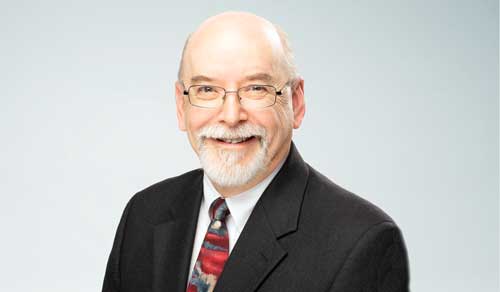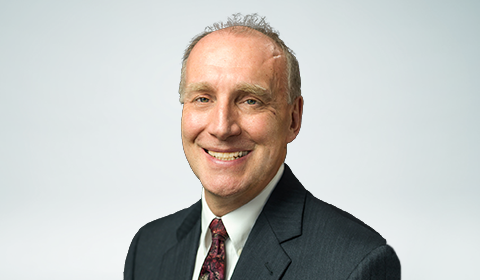When Houston police discovered a man dead in a motel room of apparent natural causes, it seemed to be a simple case. Officers need only notify next of kin. Done.
Then things got interesting. The Oklahoma man’s address was for a UPS store; his prepaid cellphone was tied to a secretive and nomadic ethnic group known for insurance fraud schemes; and his fingerprints led to a murder in Colleyville, Texas. Ultimately, investigators determined that the deceased had helped murder an elderly housekeeper for a life insurance policy taken out in her name; the slaying was just the latest in a string of incidents tied to the clan.
Welcome to the bizarre world of community fraud, a term applied to the actions of certain groups for whom insurance fraud is a way of life. Although these groups’ schemes can take many forms, community fraud frequently involves the purchase of life insurance through concealment or misrepresentation of material information in order to outlive the policy contestable period and/or incur an early death from an undisclosed illness or circumstance. And while the techniques in use can be sophisticated, the goal is very simple: windfall profit.
As the fraud committed by these groups increases in scale, insurers must respond effectively. A few basic facts can help carriers better understand, assess and mitigate this risk.
What’s in a Name?
Stereotypes can often impede a fraud investigation, and certain factors associated with community fraud, such as names or locations, should be considered only in combination with other evidence. However, clear patterns emerge in communities known for this form of deception. Certain nomadic groups of interrelated families often share common surnames and, while itinerant, often repeatedly settle in trailer parks in known locations. In the United States, known hotspots include North Augusta and Aiken, South Carolina; High Point, North Carolina; Boynton Beach, Florida; Murfreesboro, Tennessee; White Settlement, Texas; and Murphy Village, South Carolina. Other larger cities, including Chicago, Los Angeles, Memphis, and Brooklyn, New York, have been known to host enclaves. The locations may change over time, but the patterns remain the same.
The Death Watch
Names and locations are far from the only signs to spot. The same cultural practices and fraudulent schemes can also be found, including a phenomenon known as the death watch or the lottery. High levels of intermarriage enable relatives to take out term or permanent life insurance policies on elderly members of the itinerant clan. These applicants have significant medical conditions that should make their coverage ratable or the applicant uninsurable, so companies with limited underwriting requirements and simplified processes can make attractive targets.
A colluding medical examiner/paramed often will use healthy imposters for the exam and/or the same lab sample for several applications. Once issued, the policy is auctioned to other family members, who take turns paying the monthly premium, typically by money order or bank check. This can result in multiple owners, beneficiaries, and address changes. Even if the listed beneficiary is generally a family member – a son or a daughter – whoever pays the premium in the month during which the insured dies, by clan rules, is entitled to the policy proceeds; hence the moniker “the lottery.” In certain rare instances when participants in the scheme run out of patience, some have been known to take action to help speed the payout process.
Spotting the Signs
The scale of the fraud is growing as these clans grow bolder and face amounts increase in size. Still, community fraud claims are but a fraction of the estimated $80 billion in annual losses due to fraud across all product lines.
A cross-functional team of insurance and/or reinsurance company employees from underwriting, claims, legal, and sales departments can fight these incidents by better recognizing a few red flags when underwriting policies or adjudicating claims:
Underwriting red flags
- The insured is usually elderly.
- The address is usually a trailer court or park
- The given occupation is always “self-employed,” and the business is generally either home repair or house painting.
- The first premium is generally paid with a money order or bank check.
- The beneficiary is often the same person for all the policies written on clan members.
- The applicant’s name is frequently spelled slightly differently on the various documents that make up the application. The actual application, for example, may have the name spelled differently from the APS or the paramedical exam statement. Example: Jim Riley vs. Jimmy Riley vs. Jim Reilly.
- Social Security numbers are usually false, and the numbers provided will tend to differ by one or two digits on the various documents that make up the application.
- Attending Physician Statements are generally sketchy at best, as members of these clans tend not to visit doctors unless absolutely necessary, and will often pick a storefront doctor and pay in cash so that little recordable or traceable information about them exists.
- A large number of policies from a very small geographic area (e.g., a single zip code) will tend to come through at one time. Also, as only a few life insurance agents sell to these clans, the agent’s name could be the same on many applications from a small geographic area.
Claim red flags
- The same funeral home is almost always used.
- Informant‘s and parents’ names on the death certificate are one of the common surnames previously noted.
- Death is usually just after the contestable period.
- On each of the documents, Social Security numbers may differ by a few digits, and the spelling of the insured’s name sometimes also may differ slightly.
Mitigating the Risk
Of course, it is not enough to identify fraud; business processes are necessary to mitigate it. Underwriters can recognize, for example, that a new agent is suddenly selling many policies in a short time period to residents of a single trailer court in a geographic area where community fraud is said to be endemic. But what then? A few simple steps can help:
- Insurers for whom that agent sells (and it’s generally more than one) should obtain copies of that agent’s entire current book of business to determine whether the agent is indeed selling to members of a clan known for this form of fraud.
- An investigator can also be sent to talk to residents of the trailer court, the court’s manager, and the paramedic. There have been cases where the paramedic allegedly confessed.
- If it is determined that lab specimens came from someone other than the insured, any death claims occurring within the contestable period can be rescinded. Living rescissions, or voiding ab initio, can also be pursued if, after the contestability period, an insurer discovers fraud in the application materials.
- An agent found to be engaging in fraudulent policy sales to these itinerant groups can be terminated. A terminated agent isn’t necessarily an agent without access to product to sell: frequently, rogue agents can, and will, move to another insurance company, often changing their first names slightly.
- Lastly, reinsurers also have an important role in helping to communicate suspicious patterns to cedants, as do database resources such as MIB.
All in all, insurance fraud by itinerant clans and family groups can be reduced, and even prevented, if companies diligently monitor for signs during underwriting and at claims time. While it is difficult to determine the actual financial impact of discovering and addressing this fraud, insurers can certainly expect substantial savings from prevention or early detection.




